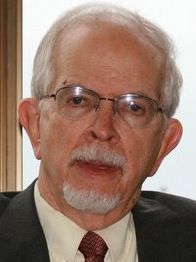“Anti-Massacree Movement” In London
Britain’s highest ranking foreign policy official, Foreign Secretary Philip Hammond, “deplored” Israel’s plans to build more than 2,000 additional homes for Israeli settlers in Palestinian East Jerusalem.
Dr. James Wall Global News Centre
(CHICAGO) Near the end of Arlo Guthrie’s classic 1967 folk tale, Alice’s Restaurant, Guthrie sings these words:
“Can you imagine, three people walking in singing a bar of Alice’s Restaurant and walking out, they may think it’s an organization. And can you imagine fifty people a day, I said fifty people a day, walking in singing a bar of Alice’s Restaurant and walking out, well friends, they may think it’s a movement.
And that’s what it is, the Alice’s Restaurant Anti-Massacree Movement. And all you got to do is sing it the next time it comes around on the guitar, with feeling.”
Well friends, I am here to tell you that the Parliament of the United Kingdom, seated in all its regal splendor in the Palace of Westminster, heard the guitar come around. They have sung, in unison, a bar of Alice’s Restaurant Anti-Massacree Movement.
Is this a bar that signals the repentance of the progenitors of the injustices caused by the Balfour Declaration?
“There are only a few documents in Middle Eastern history which have as much influence as the Balfour Declaration. The Balfour Declaration was sent as a 67-word statement contained within the short letter addressed to the British Foreign Secretary, Lord Arthur Balfour on November 2, 1917. The declaration acknowledged the establishment of a Jewish home in Palestine. The statement of the Declaration reads:
“His Majesty’s Government view with favor the establishment in Palestine of a national home for the Jewish people, and will use their best endeavors to facilitate the achievement of this object, it being clearly understood that nothing shall be done which may prejudice the civil and religious rights of existing non-Jewish communities in Palestine, or the rights and political status enjoyed by Jews in any other country.”(boldface added)
Under the headline, “Israel Is Losing It’s Friends in the World”, Philip Stephens wrote in Financial Times. (reprinted here).
“Britain’s parliament voted the other day to recognise the state of Palestine. The decision will not change anything on the ground in the West Bank or Gaza. Nor is it binding on David Cameron’s coalition government.
Yet this was an important moment, and not just because of Britain’s deep historical connections with Palestine. The debate opened a window on what Israel’s friends now think about the enduring impasse in the Middle East.”
Stephens continues his analysis:
“Benjamin Netanyahu has not had a good year. Israel’s prime minister was blamed by the US administration for wrecking its latest attempt to reassemble a peace process.
In truth, there were obstinacies and obstacles on both sides, but publicly and privately, US officials identified Israel’s land grabs in East Jerusalem and the West Bank as the principal cause of the breakdown.”
Britain’s highest ranking foreign policy official, Foreign Secretary Philip Hammond, “deplored” Israel’s plans to build more than 2,000 additional homes for Israeli settlers in Palestinian East Jerusalem.
Across the English Channel, “France’s foreign minister Laurent Fabius said [the settlement expansion] put in question Israel’s oft-stated commitment to a negotiated peace.”
Sweden preceded the UK with its earlier vote to call for a Palestinian state, drawing Israel’s ire. In the U.S., the Central Pacific Conference of the United Church of Christ has joined the BDS opposition to occupation.
The U.S. Congress is yet to display the slightest sign of gumption in any matter pertaining to Israel. Its members listen only to the money-contributing and vote-promoting AIPAC, automatically agreeing to support all the resolutions they are instructed to pass.
Meanwhile, as the UK Parliament takes its stand, the Middle East version of Alice’s Restaurant Anti-Massacree Movement is growing, thanks, in part, to the supportive work of scholars like Israeli historian Ilan Pappe, who carefully exposes the narrative of Israel’s ethnic cleansing as a key ingredient in its nation-building.
Pappe, and his colleague Samer Jaber, co-authored a Mondoweiss essay which highlights the planting of European pine trees as a cover for Israel’s ethnic cleansing of Palestinian villages..
The essay opens:
“The pine trees in Palestine appeared with the establishment of the state of Israel. The pine is generally a European species which before the 20th century was not seen in the Middle East. It was brought to Palestine by the Zionist settlers for two main reasons.
First, it gave the new Jewish settlers the feeling that the place they had migrated to was somehow part of Europe. And if Palestine were to be ‘Europeanized’ in such a manner it would also be ‘civilized’ — the inferior local population would be replaced by a superior one. Thus Zionism was not just a redemption of an ancient land, it was also the revitalization of what in their eyes was an Arabian desert both ecologically and culturally.
The second reason for their import was more practical; they were brought to cover up the ethnic cleansing of Palestine that took place in 1947-48 and produced the Palestinian Catastrophe, the Nakba. The fast-growing pine was widely used to create Israeli national and recreational parks to hide the ruins of destroyed Palestinian villages and neighborhoods which had been evicted by force in 1948.”
The planting of pine trees did not stop in 1948:
“When Israel occupied the West Bank and Jerusalem in 1967, pine trees again were planted to cover the new wave of destroyed villages; Imwas, Yalo and Beit Nouba, in the Latrun Valley near Jerusalem. In their stead the ‘green lung’ of Canada Park appeared as a recreational ground hiding the inhumanity of the villages’ depopulation
Covering ethnic cleansing with pine trees is probably the most cynical method employed by Israel in its quest to take over as much of Palestine as possible with as few Palestinians in it as possible.”
Uri Avnery, veteran Jewish activist, has been another steady Jewish voice over the years, telling outsiders they are missing the truth behind Israel’s narrative.
In a posting this week on his Gush Shalom web site, Avnery described what the world was seeing in Gaza:
“For a month and a half, day after day, people around the world were bombarded with pictures of killed human beings, maimed children, crying mothers, destroyed apartment buildings, damaged hospitals and schools, masses of homeless refugees. Thanks to Iron Dome, no destroyed Israeli buildings could be seen, nor hardly any dead Israeli civilians.
An ordinary decent person, whether in Stockholm or Seattle or Singapore, cannot be exposed to such a steady stream of horrible images without being affected – first unconsciously, then consciously.
The picture of “The Israeli” in the mind’s eye changes slowly, almost imperceptibly. The brave pioneer standing up to the savages around him mutates into an ugly bully terrorizing a helpless population.”
Those “horrible images” from Gaza contribute to the growth of the Middle East Alice’s Restaurant Anti-Massacree Movement. As Arlo Guthrie sings, “all you got to do is sing it the next time it comes around on the guitar, with feeling.”
The illustration of Benjamin Netanyahu is from Financial Times.. The link to the recording is from “Alice’s Restaurant Massacree” by Arlo Guthrie (AmazonMP3). The picture of Arlo Guthrie at the top was taken in 2005 at a Minnesota Zoo Amphitheatre performance.
http://wallwritings.me/2014/10/18/anti-massacree-movement-now-in-london/
___________________________________
 Journalism was Jim Wall’s undergraduate college major at Emory University, Atlanta, Georgia. He has earned two MA degrees, one from Emory, and one from the University of Chicago, both in religion. An ordained United Methodist clergy person; he and his wife, Mary Eleanor, are the parents of three sons, and the grandparents of four grandchildren. They live in Elmhurst, Illinois.
Journalism was Jim Wall’s undergraduate college major at Emory University, Atlanta, Georgia. He has earned two MA degrees, one from Emory, and one from the University of Chicago, both in religion. An ordained United Methodist clergy person; he and his wife, Mary Eleanor, are the parents of three sons, and the grandparents of four grandchildren. They live in Elmhurst, Illinois.
Jim served for two years on active duty in the US Air Force, and three additional years in the USAF (inactive) reserve. While serving with the Alaskan Command, he reached the rank of first lieutenant. He has worked as a sports writer for both the Atlanta Journal and Constitution, was editor of the United Methodist magazine, Christian Advocate for ten years, and editor and publisher of the Christian Century magazine for 27 years, starting in 1972. Time magazine wrote about the new editor, who arrived at the Christian Century determined to turn the magazine into a hard-hitting news publication. The inspiration for Wall Writings comes from that mindset and from many other sources that have influenced Jim’s writings over the years, including politics, cinema, media, American culture, and the political struggles in the Middle East. Jim has made more than 20 trips to that region as a journalist, during which he covered such events as Anwar Sadat’s 1977 trip to Jerusalem, and the 2006 Palestinian legislative election. He has interviewed, and written about, journalists, religious leaders, political leaders and private citizens in the region. You can write to Jim Wall at [email protected]. Visit Jim’s Website: Wall Writings



































Leave a Reply
You must be logged in to post a comment.